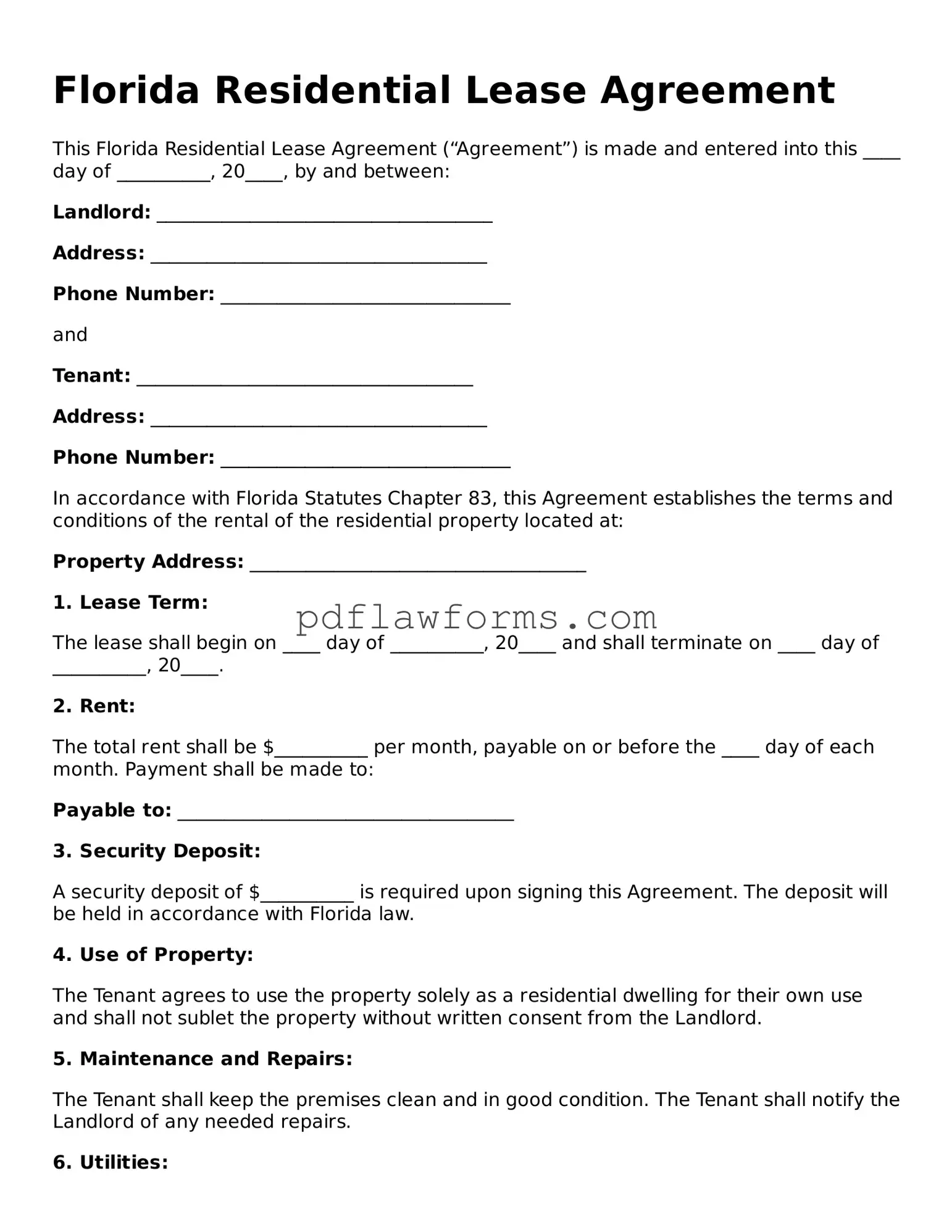When filling out the Florida Residential Lease Agreement form, many individuals overlook crucial details that can lead to misunderstandings or legal complications. One common mistake is failing to provide accurate personal information. Landlords and tenants must ensure that names, addresses, and contact details are correct. Any discrepancies can create confusion and may complicate communication.
Another frequent error involves neglecting to specify the lease term. The duration of the lease should be clearly stated, whether it is a month-to-month arrangement or a fixed-term lease. Without this information, both parties may have different expectations regarding the rental period, leading to potential disputes.
Many people also forget to include the security deposit terms. This section should detail the amount of the deposit, the conditions under which it may be withheld, and the timeline for its return after the lease ends. Omitting this information can result in misunderstandings about the financial obligations of the tenant.
Additionally, tenants often fail to read the section regarding maintenance responsibilities. This part of the lease outlines who is responsible for repairs and upkeep. If this is not clearly defined, it can lead to disputes over who should handle maintenance issues during the lease term.
Another mistake is not addressing the rules regarding pets. If a landlord has specific policies about pets, they must be included in the lease. Tenants should be aware of any restrictions or additional fees associated with having pets. Ignoring this can lead to conflicts and potential eviction.
Lastly, many individuals overlook the importance of signatures and dates. Both the landlord and tenant must sign and date the lease agreement for it to be legally binding. A missing signature can invalidate the lease, leaving both parties unprotected. Ensuring that all necessary signatures are present is crucial to uphold the agreement.
